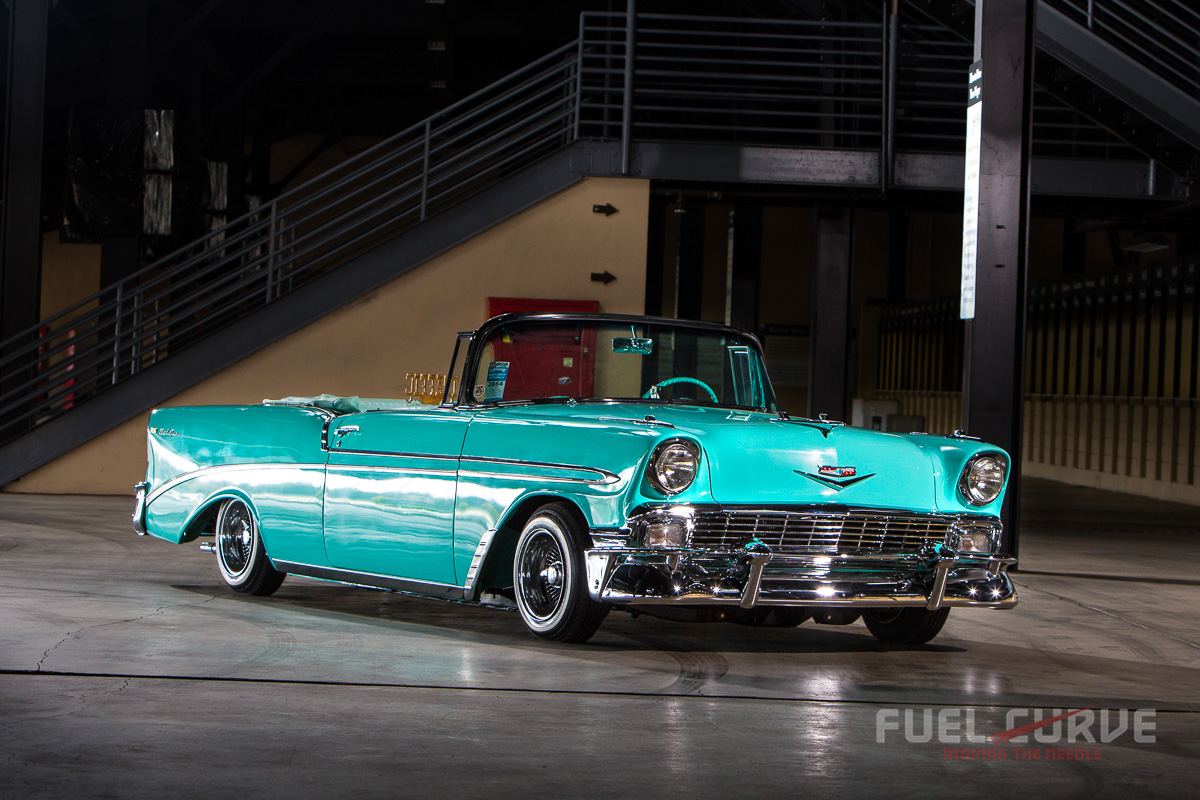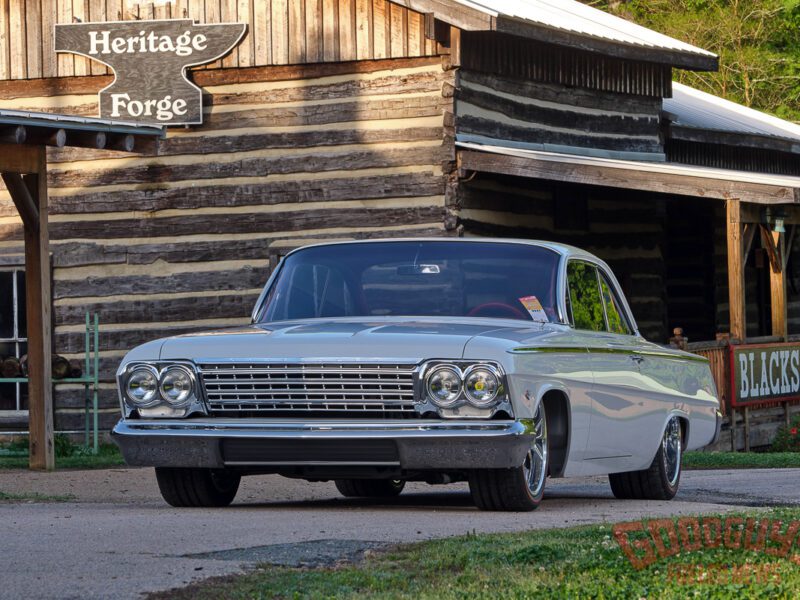1956 Chevrolet Bel Air: Anthony Bruno’s Fine Teal Tri-5
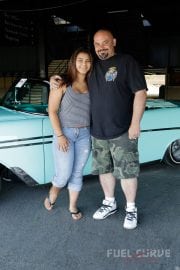 Chevrolet’s tri-five Bel Air have long held captive America’s admiration. For over sixty years, these American postwar boom vehicles represent what many view as better times. For some, they represent a transitional moment in time of automotive design; a time when the rounded fat fendered look started giving way to jet-age design. For others, they represent a leap in power plant technology. Chevrolet’s venerable mousey motor debuted in these vehicles and have remained a mainstay choice of power ever since. And still, for others they represent freedom and good times, cruising, hanging out at drive-ins and perhaps taking a ride and getting away from it all.
Chevrolet’s tri-five Bel Air have long held captive America’s admiration. For over sixty years, these American postwar boom vehicles represent what many view as better times. For some, they represent a transitional moment in time of automotive design; a time when the rounded fat fendered look started giving way to jet-age design. For others, they represent a leap in power plant technology. Chevrolet’s venerable mousey motor debuted in these vehicles and have remained a mainstay choice of power ever since. And still, for others they represent freedom and good times, cruising, hanging out at drive-ins and perhaps taking a ride and getting away from it all.
Whatever the reason, there is no right, or wrong they simply are what they are: great vehicles with great aesthetics. When compared with the egg shaped/doorstop looking cars of today, it’s easy to see why they are even more coveted than they were when new.
Anthony Bruno — owner and restorer of this fine 1956 Chevrolet Bel Air — is likely to have reasons of his own when it comes to his car. “Madness and insanity” were some of the monikers thrown his way when he first brought home the Bel Air. It was literally in pieces, like a thousand-piece jigsaw puzzle of rusting parts. Where others saw hopeless amounts of time and futilely spent trying to put it all back together, Anthony’s, artistic eye saw past the raw carnage of rust. He had a tangible vision laid before him of what the 1956 Chevrolet Bel Air could actually be, and more significantly he possessed the skills to make it happen.
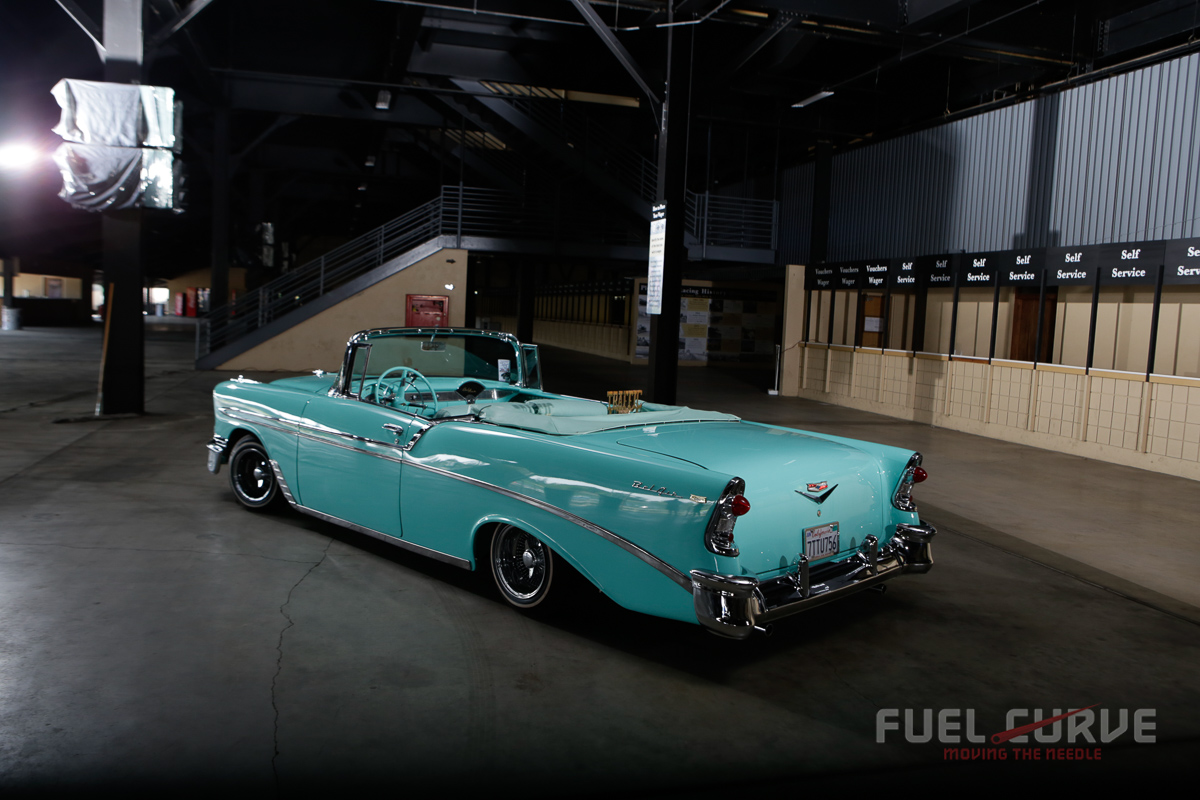
Sometime during the 1980’s it came into the previous owners head to completely disassemble the ’56. The original 256c.i. small block was re-machined, all the chrome was redone, a plethora of NOS parts still in their boxes were collected, and then it all came to a halt. The bare bones body with all its sheet metal removed was stored outside. As Bruno tells the story “Thankfully they removed the carpet, door panels, seats…everything.” Having all those installed would have been collection points for moisture, which would have led to body rot. Fortune smiled on Bruno as he gave the car a closer look, it was all just surface rust. And surface rust is easily removed.
Bruno informs us that when he goes to car shows he drives the ’59 and he lets his 17-year-old son drive the fresh ’56. The perma-grin on the kid’s face couldn’t be jackhammered off Bruno tells us.
Bruno is an automotive painter and body man by trade. When the Bel Air arrived at his home, he immediately put it up on a rotisserie— because everybody has a rotisserie in their home garage right? The frame was cleaned, repainted, and restored to mostly stock shape. All the original steering and suspension was put back in order. Sticking to tried and true old school lowering methods, two coils were cut from the front springs and lowering blocks were used in the back to set the all important ride height and stance. There was a disc brake upgrade in the front and a Chevy 10-bolt rear end – other than that, it’s stock. The original 265c.i. small block, even though it been machined and rebuilt, had been sitting on an engine stand with no heads and intake. It was frozen and would not rotate when Bruno got it. Bathed in oil for days the pistons were finally freed, and the engine disassembled. As luck would have it, the block was in perfect shape and didn’t require further machine work, so it was cleaned and put back together with no further problems.
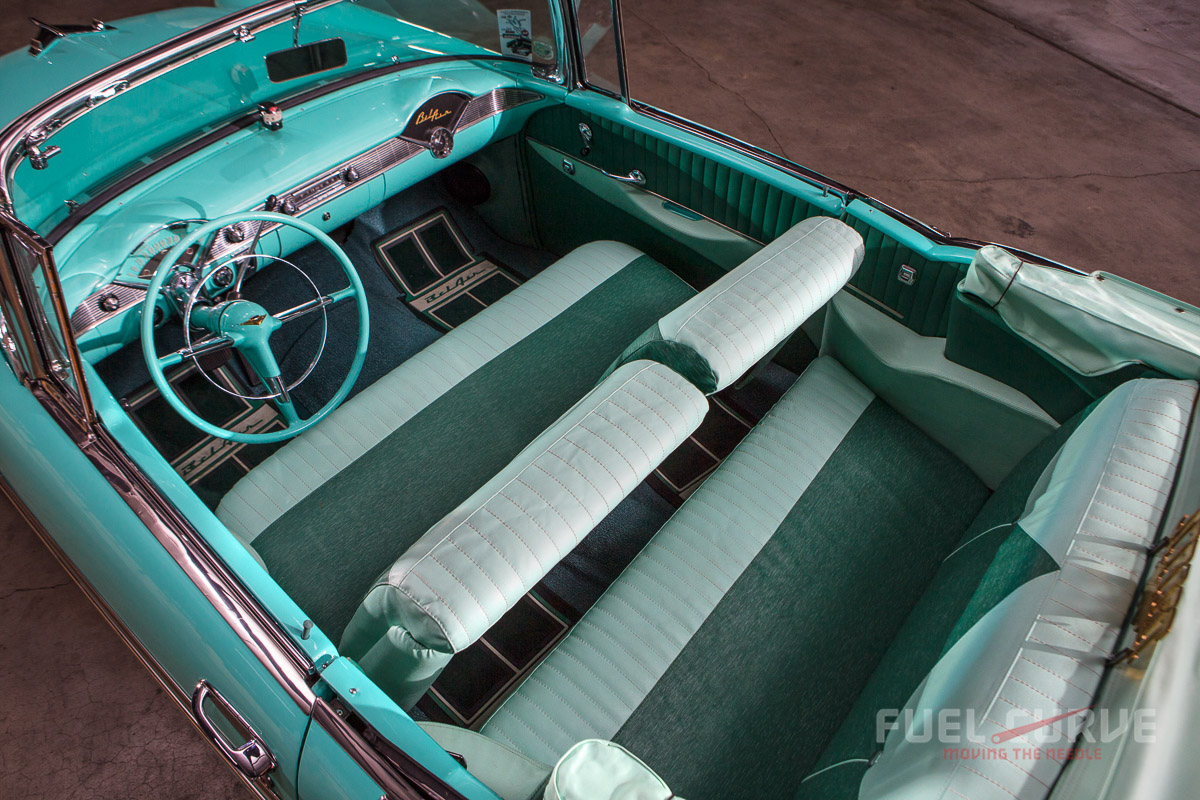
Bruno says his whole goal was to “make it a driver.” He could have kept the drivetrain numbers matching but opted to get rid of the Powerglide and replace it with a stout TH350. With a few best friends from his “Traffic” car club and his son by his side, they diligently labored on the 1956 Chevrolet Bel Air. After all the rust was removed Bruno painted the Belair inside out and upside down with custom-mixed teal-hued PPG Envirobase waterbased paint and PPG clear. It was all done in the home garage and having the rotisserie was a definite advantage when it came to sealing and painting the underside.
One of the best things about purchasing somebody’s abandoned project car is all of the parts that come with it. An entire interior kit was still packed up in boxes. All the trim, badges, gauges, steering wheel, everything was new or NOS. When the car rolled into Bruno’s garage, it was a rusted pile of parts in cardboard boxes. When it rolled out 14 months later, it was a finished, nearly numbers-matching 1956 Chevrolet Bel Air convertible.
This restoration in his home garage wasn’t Bruno’s first attempt; he owns another classic Chevrolet, a ’59 Impala that he’s been cruising to events for years. Bruno informs us that when he goes to car shows he drives the ’59 and he lets his 17-year-old son drive the fresh 1956 Chevrolet Bel Air. The perma-grin on the kid’s face couldn’t be jackhammered off Bruno tells us. And that right there is all the reason in the world to resurrect a car, the time spent with family and friends, the bonding, and the memories. These are things money can’t buy. Anthony Bruno would like to publicly thank: Adrian Hernandez, Jose Hernandez, Abe Yaenna, Jason Thomas and Dave Door. Without their help, this car would have taken a lot longer than 14-months to finish.
[smartslider3 slider=28]

